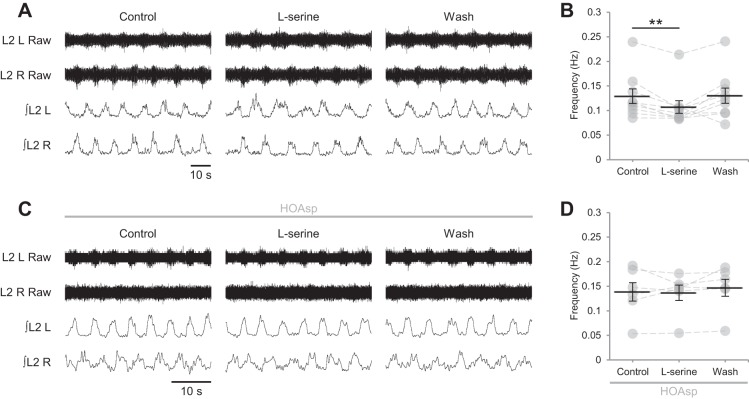Fig. 5.
Racemization of l-serine within the spinal cord results in a decrease in the frequency of locomotor-related activity. A: raw (top) and rectified/integrated (bottom) traces recorded from the left and right L2 ventral roots (L2 L; L2 R) showing the effect of the d-serine precursor l-serine (50 µM) on locomotor-related activity induced by 5-HT (15 µM) and DA (50 µM). B: locomotor-burst frequency over 5 min during a control period, during a 15-min application of l-serine (40–100 µM), and during a 30-min washout. Individual data points are shown in gray, and means are represented by black lines; n = 9 preparations. C: raw (top) and rectified/integrated (bottom) traces recorded from L2 L and L2 R showing the effect of l-serine (50 µM) on locomotor-related activity in the presence of the serine-racemase inhibitor HOAsp (400 µM). D: locomotor-burst frequency over 5 min during a control period, during a 15-min application of l-serine (50 µM), and during a 30-min washout. HOAsp was present throughout; n = 6. Statistically significant difference from control: **P < 0.01.

